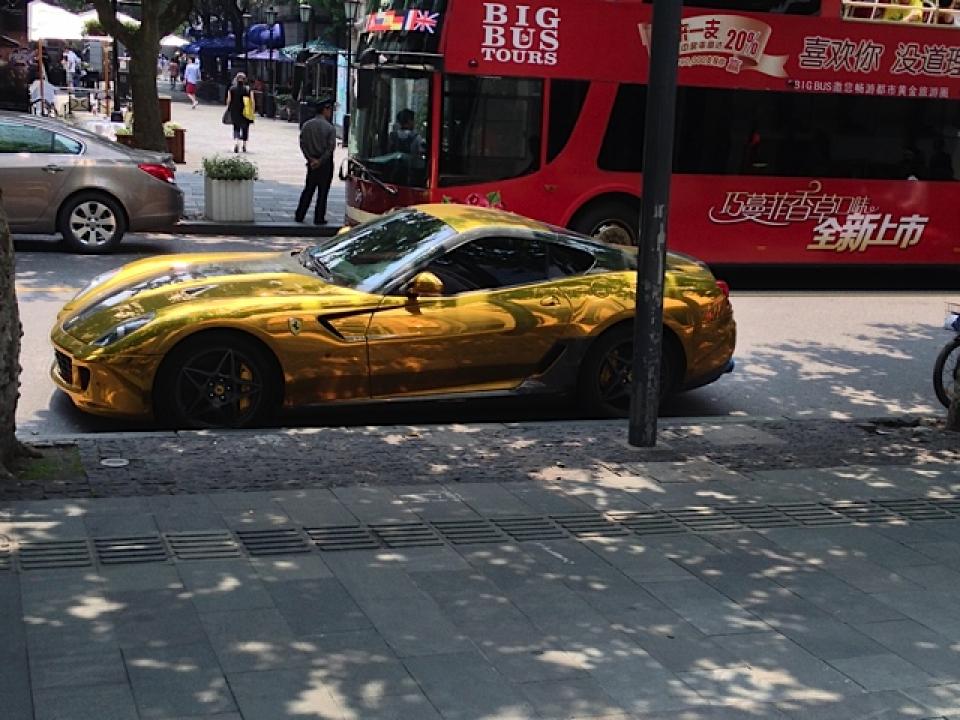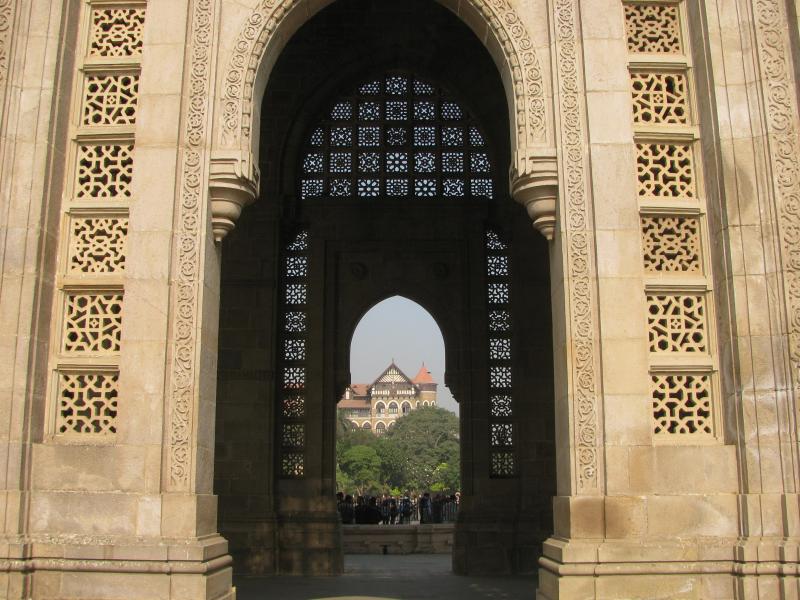The second of two thought pieces by Rod MacKenzie, former regional director, Greater China, New Zealand Trade & Enterprise.
Across the street from a small outdoor café in the French concession area of downtown Shanghai someone has parked a gold-plated Ferrari. Plated. Not merely gold-coloured but a lustrous deep brownish gold that no mere paint job could ever replicate.
This is mildly surprising because there’s usually a candy-floss pink Ferrari parked in that spot. Maybe both cars belong to the same person but it seems unlikely. Where shocking pink is, frankly, a visual obscenity (Hello Kitty meets Enzo) the gold is pure class. Ostentatious perhaps. Well, outrageous actually. But beautiful nevertheless.
Frankly I would never have imagined such a thing possible. Surely the gold takes a good couple of seconds off that all-important 0-100 acceleration? And this is important in a country where the traffic and the roads really only allow short bursts of real speed. How embarrassing not to be able to hit Mach one between traffic lights on Huaihai Rd!
But there it is. Parked under the trees that line the streets in this charming and historical part of Shanghai and across the road from the aforementioned café that is notably called, in Chinese, Cat-Shit Coffee. The English name is somewhat more polite.
If you turn your head in the opposite direction, however, the vehicles are less grand. In fact most of them only have two wheels and are more rust coloured than gold. A few three-wheelers carry mountains of boxes, discarded packing materials, demolition discards and just about anything else than can be picked up off the street. Washing hangs off bamboo stalks out of second storey windows or strung on makeshift lines between power poles. The people sitting around the footpaths aren’t drinking ten-dollar cups of civet-poo coffee either.
Shanghai is not by any means a typical Chinese city but it takes many of the traits of this rapidly developing nation and magnifies them to varying degrees of extreme.
The Shanghainese are intensely proud of their city, with good reason it must be said, and tend to regard other provinces with a healthy dose of disdain. Try asking a Shanghai taxi driver about people from Hunan and see what you get. The feeling tends to be returned with equal intensity but residents of Shanghai don’t care. Theirs is the city that is leading China into a glorious future of prosperity.
To do this, however, requires non-stop construction, destruction, dispossession and relocation, the latter both voluntary and involuntary. The pace of all of these, to the Western eye anyway, is jaw-dropping.
The modern Pudong area, on the east side of the Huangpu River and in direct contrast to the historic colonial era Bund located on the west side, must be well on the way to being the next wonder of the world. In 1993 Pudong was little more than a clutter of warehouses, shacks and other derelict buildings disintegrating on a swamp. Now it’s a modern city that seems to grow explosively every time you turn around.
Pudong was born when the area was designated a Special Economic Zone in the early 90s and has flourished ever since. This is important to note as the Chinese Government embarks on another ground-breaking endeavor, the Free Trade Zone located at Waigaoqiao, about 20km north-east of Shanghai’s city centre. When something is designated a “zone” in China it means something even if it starts off as a swamp.
China is rife with stories of building things bigger, faster and taller than anywhere else but Pudong is living evidence of what this can actually mean. The original flagship buildings, the Oriental Pearl Tower (the stack of balls that features in just about every Shanghai postcard), the Jin Mao Building and the Shanghai World Financial Centre (the bottle-opener) have been overtaken by the 565-metre Shanghai Tower that is set to become the new landmark for the city. As you would expect in an area where nothing significant exceeds 21 years old, Pudong is a symphony of streamlined glass, steel and massive traffic jams that require a gold-plated Ferrari to work your way through.
Just in case, though, you could be fooled into thinking that everything about Shanghai is modern and cosmopolitan, there’re the dead pigs. Periodically and prolifically, the Huangpu River plays host to thousands of dead pigs deposited there by farmers from a neighbouring province. Last year the Shanghai Daily ran a regular update on the number of pig carcasses hauled out of the river but gave up (or had a visit from the censors) when it got to 15,000. Early into the Year of the Horse the pig count is already in the early thousands and growing ominously. Some things will take a while to change.
The dead pigs aside, Shanghai is a city to be keenly watched and engaged with. For all of its complications, contradictions and competitiveness this is the city in the vanguard of commerce in the Middle Kingdom. There’s an unstated but apparent aim of overtaking Hong Kong as the trading hub for the region brought even more sharply into focus by the creation of the nascent Free Trade Zone. Here, if all of the early hype is to be believed, many of the more irritating aspects for foreigners doing business in China will be put to rest.
Shanghai is also where consumption trends in China begin – and quite frequently end. Perhaps its not surprising that spending money is increasingly becoming a pastime in the city when you realize that discretionary incomes have doubled in the last seven years and the forecasts are for this to accelerate. No one under the age of 35 has ever experienced a decline in the overall wealth of Shanghai’s urban area.
The world’s major brands are all here but few plan on making money on the mainland anytime soon. Luxury brand shopping is done elsewhere in the world where it’s cheaper – Paris for example. The brand owners know though that they have to be seen to be in China to be bought by Chinese – even if it’s not in their own country.
Building brands on the mainland is unquestionably the future for any serious consumer product but, as has been observed by many, it’s a long haul and the first movers in categories not familiar to the Chinese are not usually the biggest winners.
Take the Chilean wine industry. The Chileans were early on the scene in the mainland wine market but learned very quickly that when Chinese bought grape wine it was (a) red, (b) French from some fancy chateau and (c) used for an occasional toast and then quickly substituted for something substantially more alcoholic. Their response, one that is costing them to this day, was to ship in bulk and discount. Even now if you’re looking for a bottle of anything even moderately drinkable in the wine section of the supermarket (assuming it has one at all) the only thing you’ll find under $20 a bottle is Chilean.
In recent times wine has very slowly started to come to the notice of a small percentage of Chinese consumers. French red is still the wine of choice for gifting and celebrating but ever so slowly you can see young female professionals drinking white wine (the men are far too conservative to do anything so bold) and wine lists with a decent selection becoming common place in restaurants.
And then suddenly, last year, China became the world’s largest importer of grape wine. This is the sort of statistic that pops up all the time of course and it can easily be shrugged off by pointing to a population of 1.3 billion people - so of course China is going to be the biggest consumer of everything. Perhaps so, but the consumption of grape wine is such a leap from the customary way of things it’s an important signal of change in some key parts of the consumer demographic.
Make no mistake though. For the pioneers of wine importation, particularly of New World wines, it’s going to be a long haul.
Shanghai can be seen as a microcosm of China but only if you accept it is at the extreme end of many things. Its diversity, contrasts, deeply rooted culture and slowly emerging cosmopolitanism are occurring elsewhere on the mainland but in much less contrast and at a much more sedate pace. This is no doubt part of a grand plan somewhere – it certainly feels like it.





